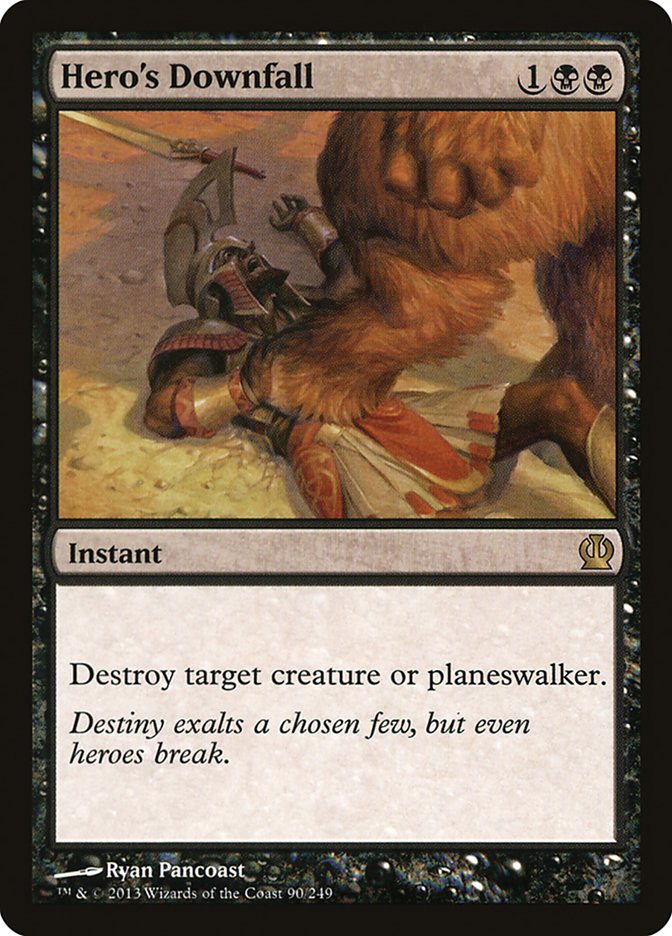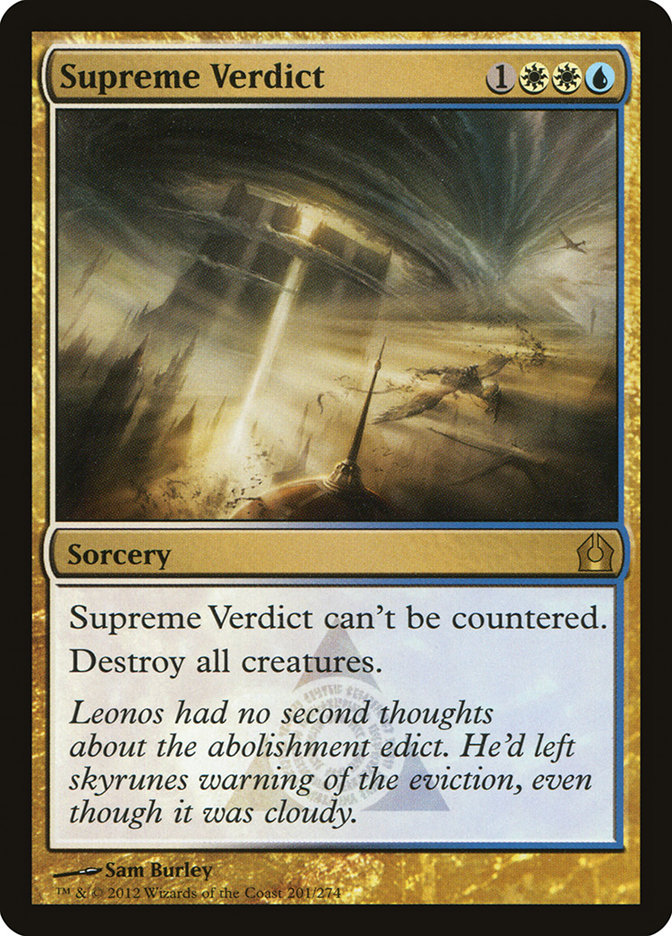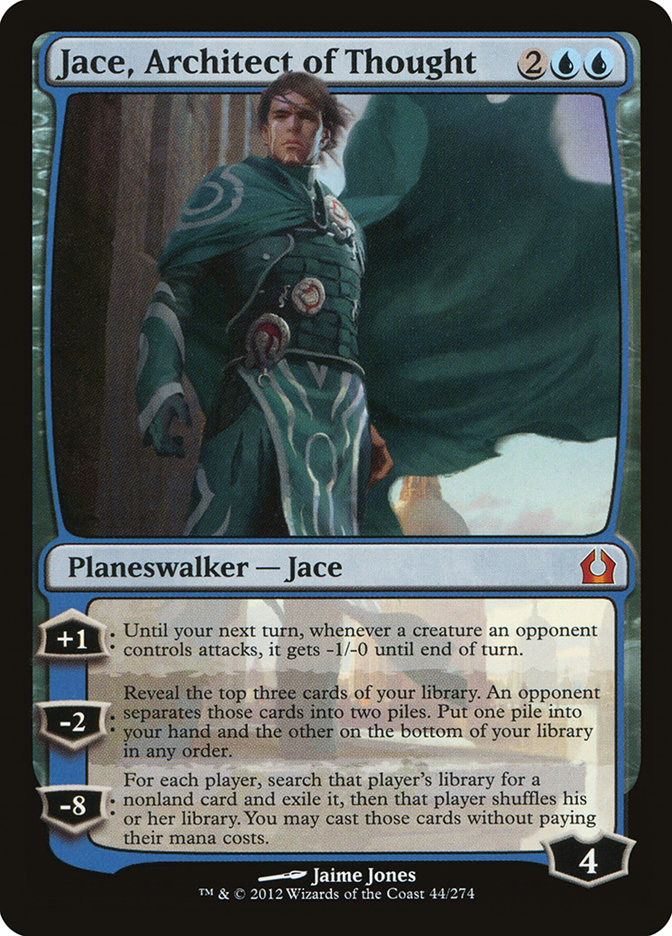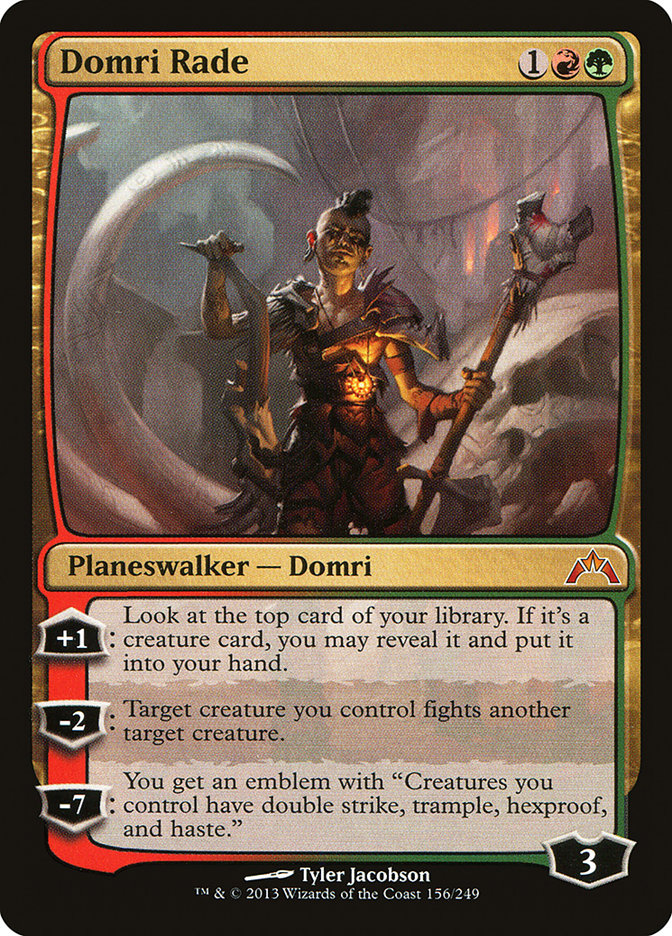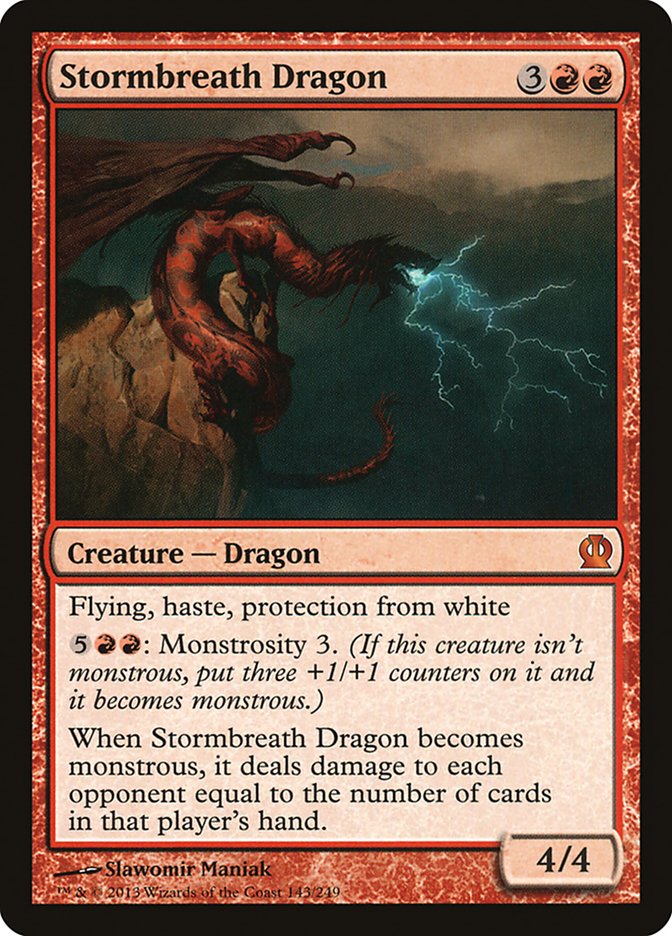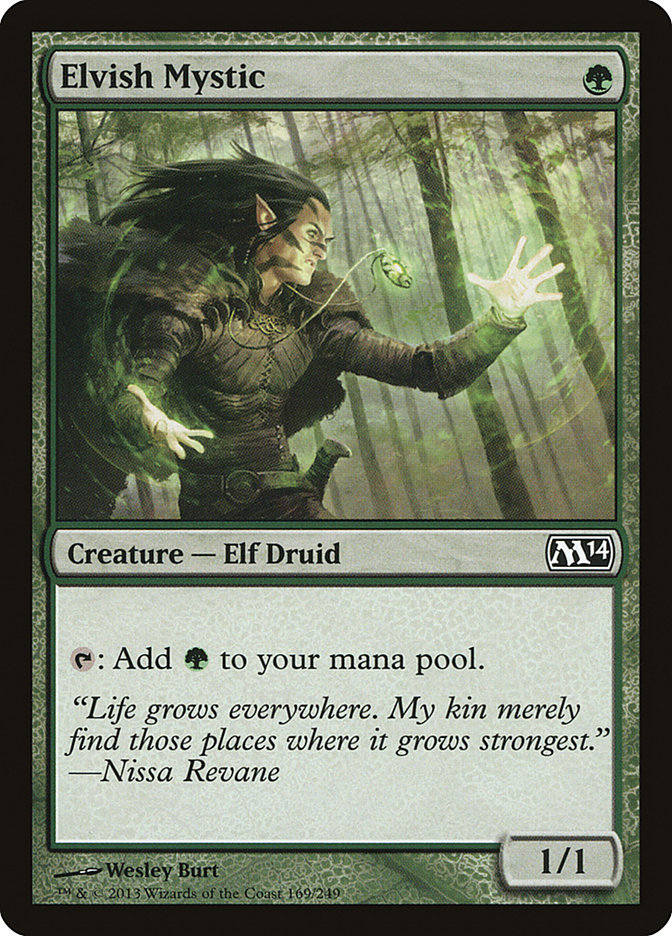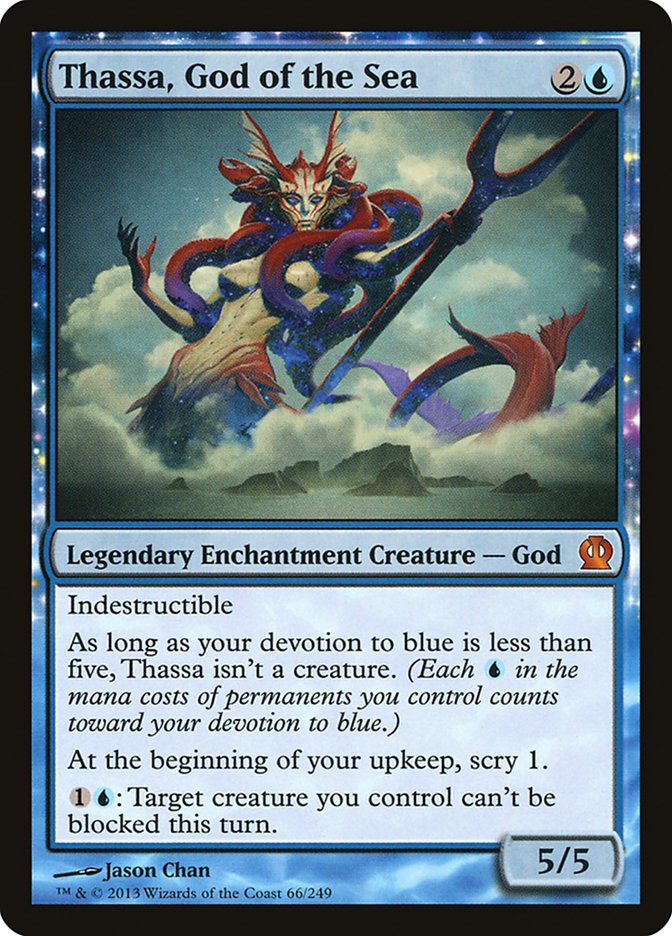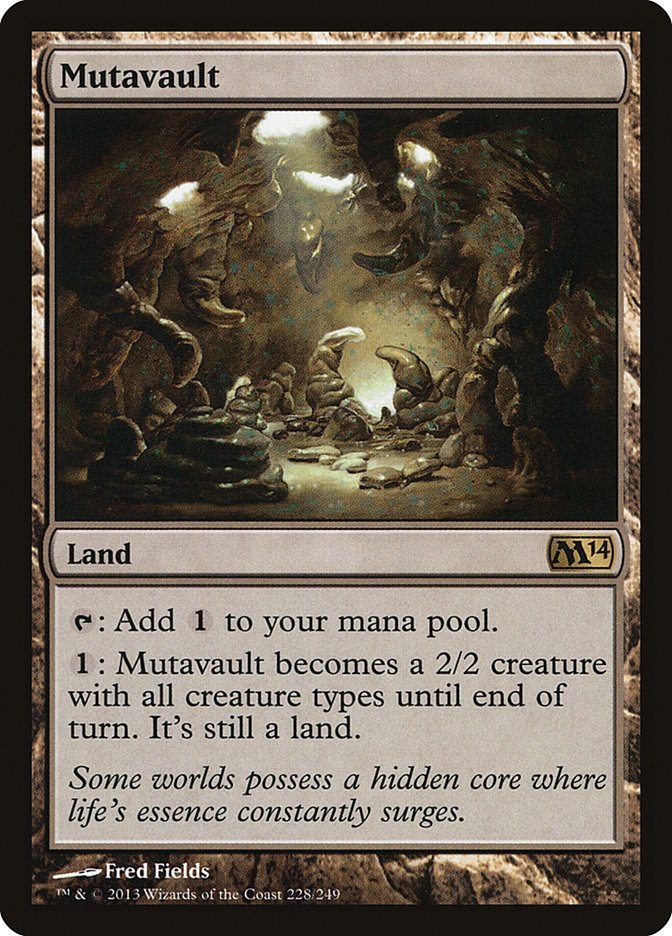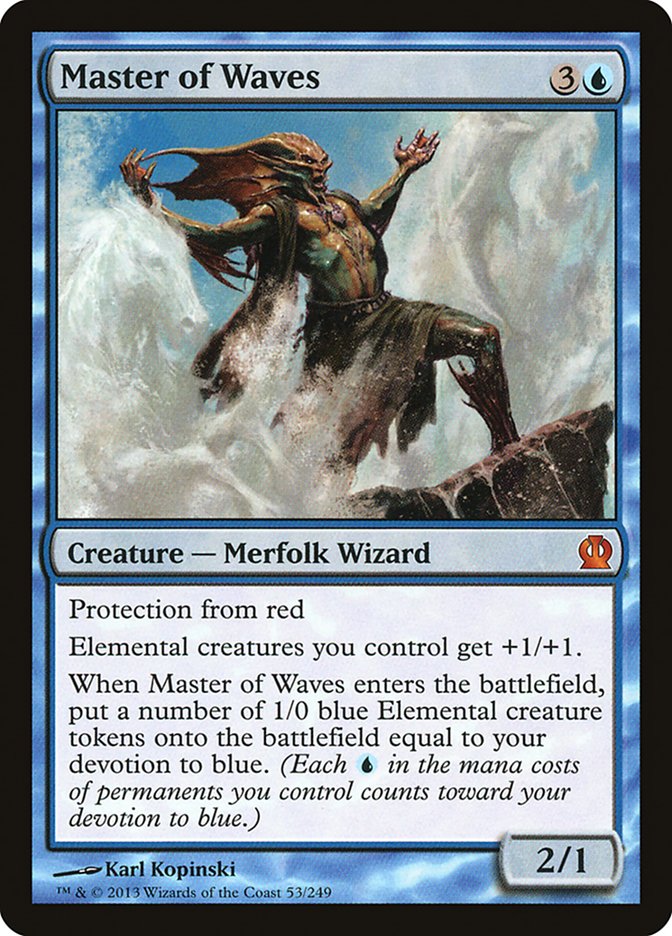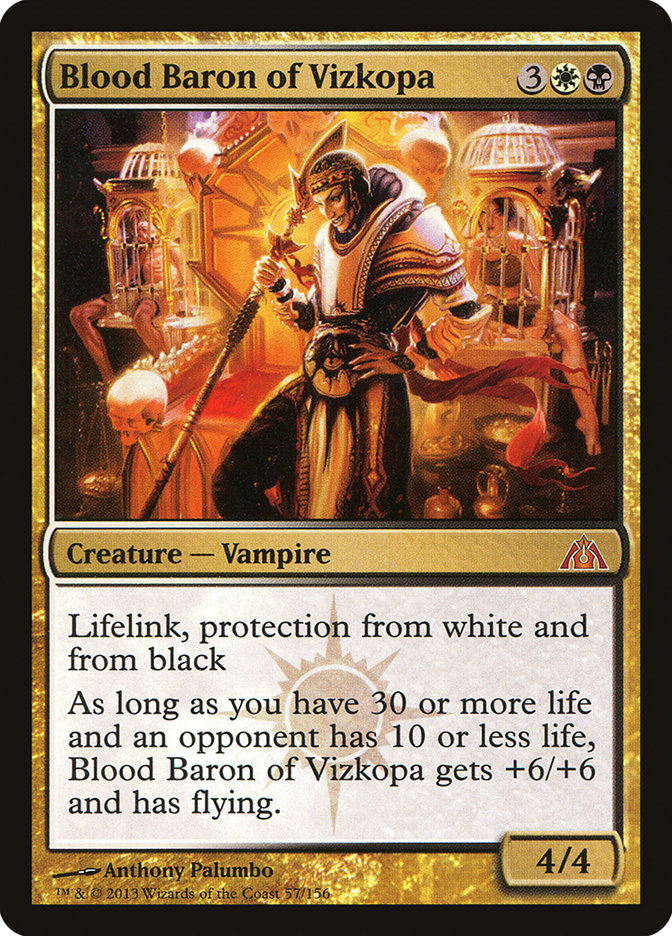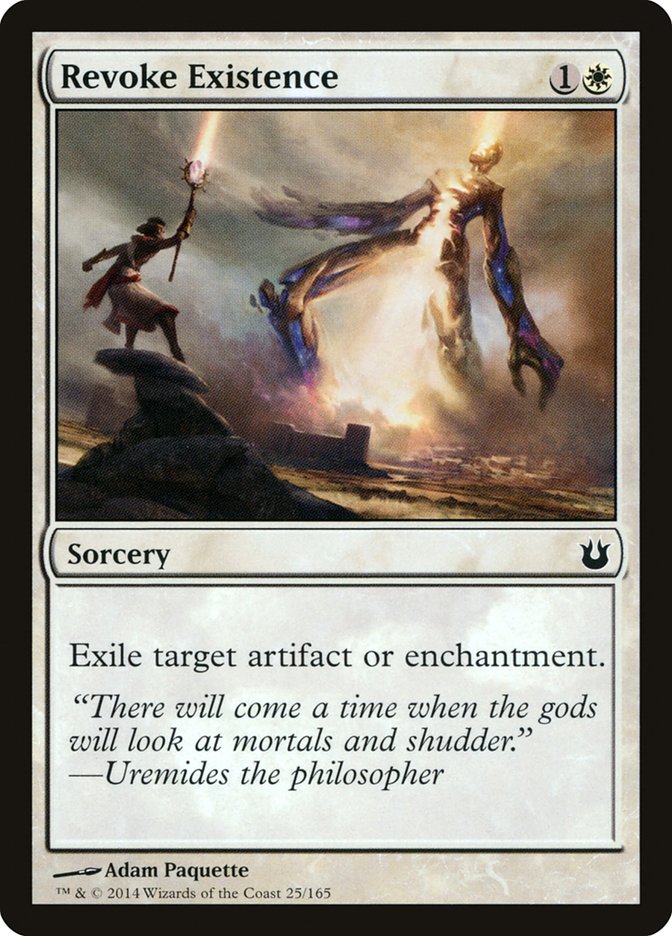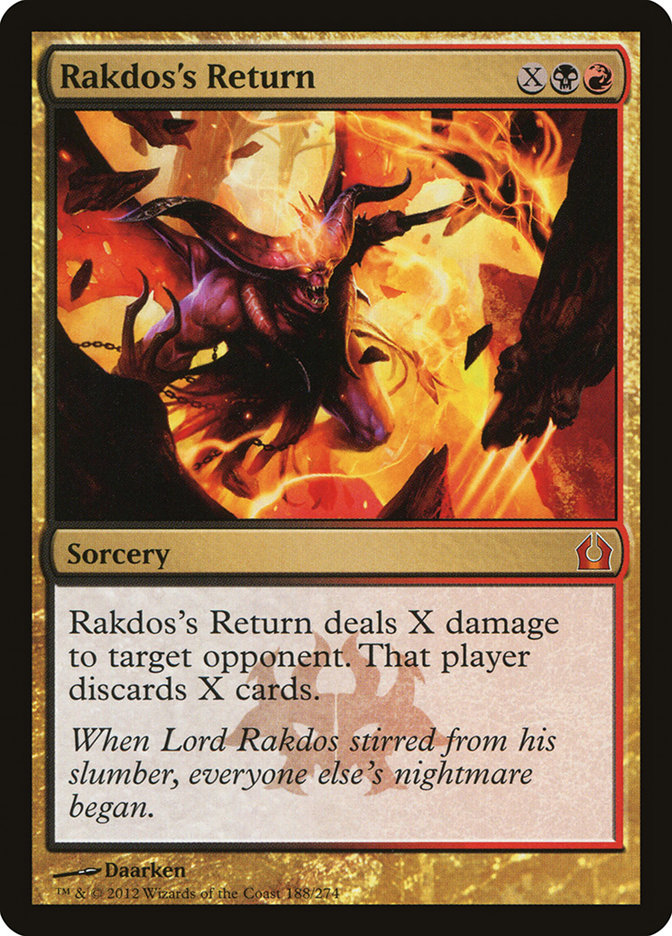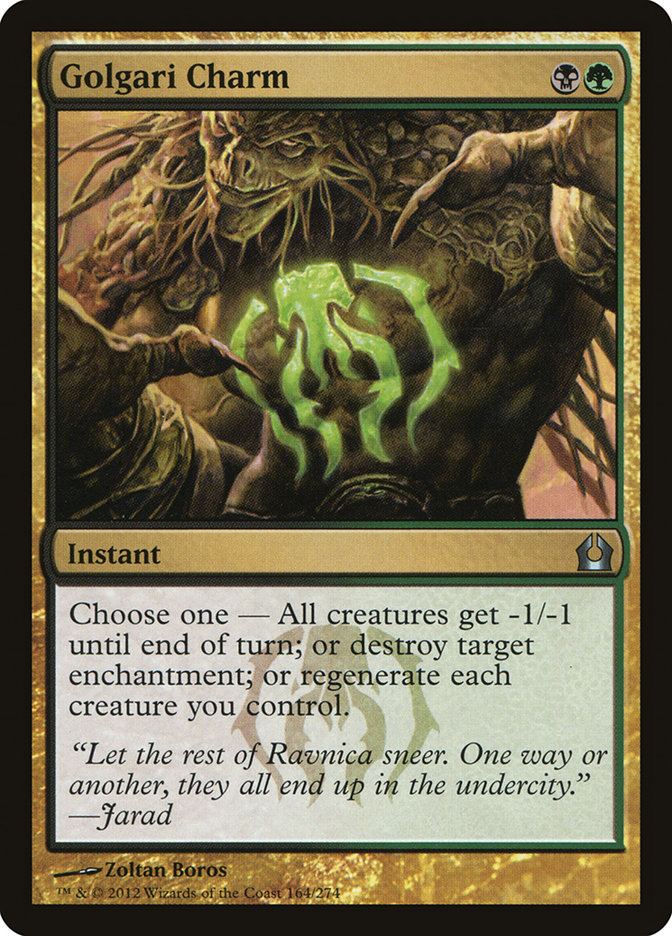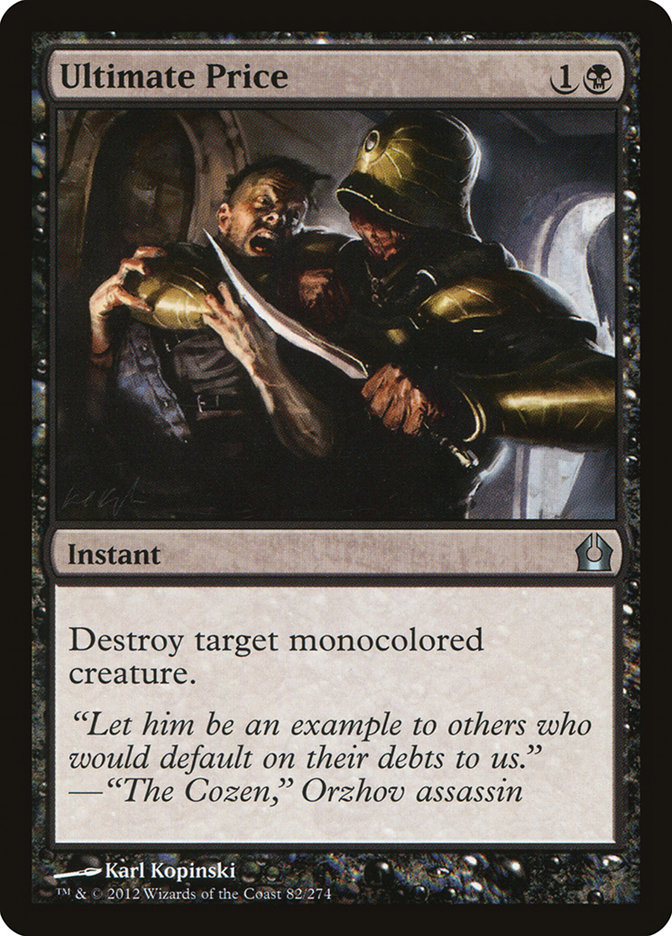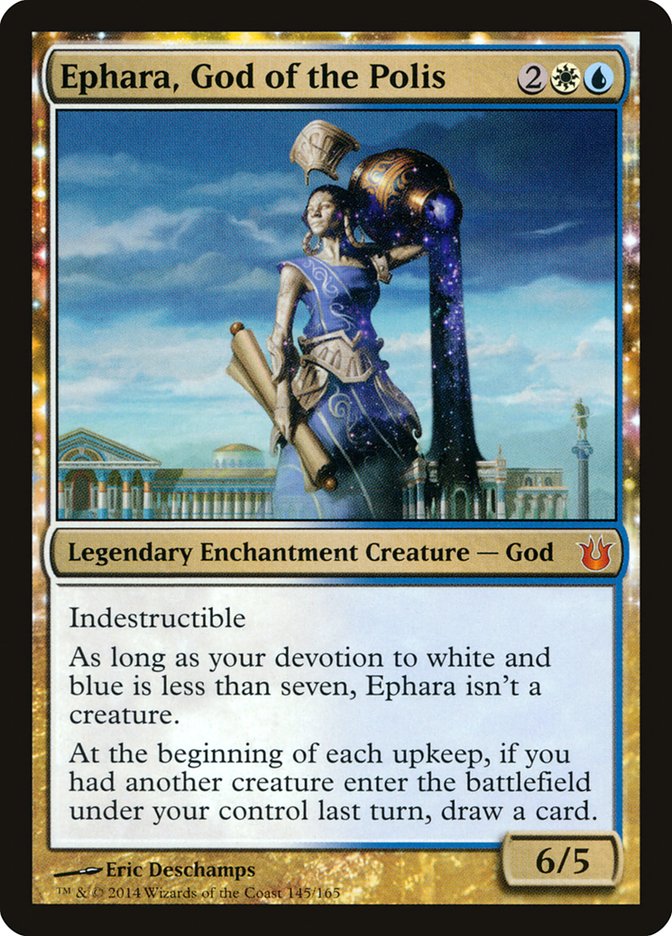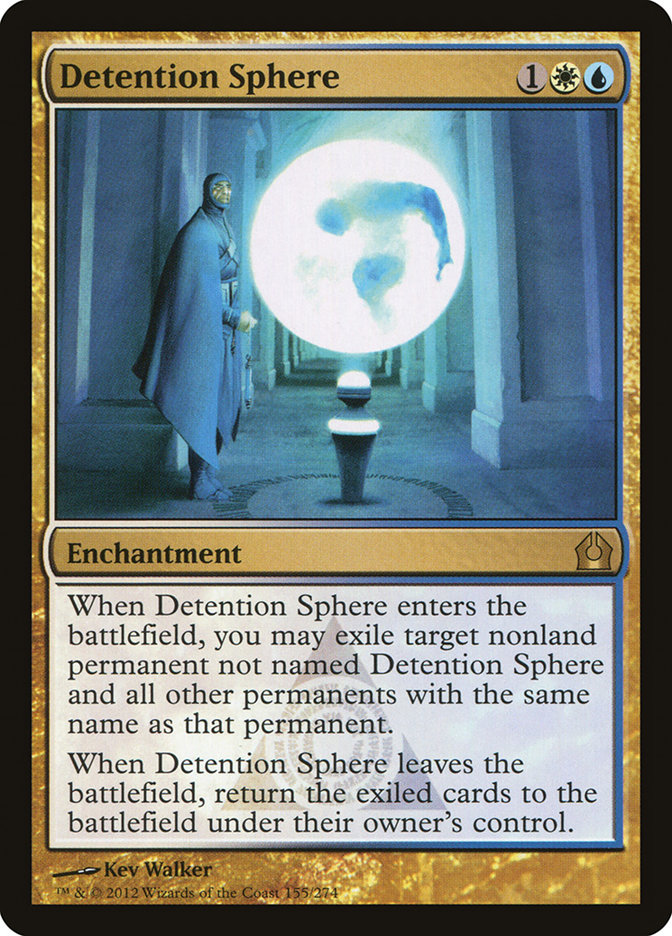Change often happens slowly.

Hey, I can almost see his butt crack!
While there are always exceptions, formats that have been around for a while don’t tend to have huge shifts. Rather, decks evolve slowly, changing from their base parts to become more efficient parts of their environment.
For the most part, Standard has been defined by four main genres.
Mono-Black Devotion
Often called the most consistently powerful deck in the format, the power of Thoughtseize and the versatility of Hero’s Downfall allows Mono-Black Devotion to be adept at handling all comers. Its huge amounts of removal have almost completely removed aggressive synergy-based devotion decks from the format, and the combination of Pack Rat and Mutavault give it draws that even the most aggressive decks can’t keep up with. Underworld Connections and Nightveil Specter provide card advantage while Desecration Demon and Gray Merchant of Asphodel mop up.
Despite its power, Mono-Black Devotion can be weak to quick creature rushes and burn due to the self-damaging nature of many of its spells. Any deck able to keep Underworld Connections in check while generating some of its own card advantage should be able to overwhelm Mono Black’s resources. There are also some cards like Assemble the Legion and the Gods that Mono-Black Devotion can’t remove at all barring a fortunate Thoughtseize.
U/W Control
The premier true control deck of the format, U/W Control seeks to maximize the unlimited potential of Sphinx’s Revelation as an endgame. U/W Control keeps the rest of the format honest in a lot of ways; it runs no almost no targetable creatures, which means removal is often useless against it, and it runs the only real board sweeper of any deck in Supreme Verdict. The combination of Jace, Architect of Thought and Supreme Verdict in concert with some spot removal spells makes life very difficult for any deck looking to attack with smaller creatures, and a fairly robust counterspell suite, planeswalkers, and a number of Mutavault give it solid game against all other opponents.
However, U/W Control can often have problems against decks with a lot of noncreature threats. While Detention Sphere is one of the best removal spells in the format, any deck that can provide a large number of threats that get around Supreme Verdict, such as planeswalkers, gods, Mutavault, or flash creatures, can often overwhelm the four Spheres. This sort of pressure backed up with haste creatures can spell disaster for U/W Control and helps explain the popularity of our next deck.
G/R Monsters
While smaller creature decks have struggled in the face of Mono-Black Devotion and U/W Control, G/R Monsters has three things in mind: huge haymaker creatures, card advantage planeswalkers, and fast mana acceleration. With its Elvish Mystic and Sylvan Caryatid, it’s able to present powerful threats like Stormbreath Dragon and Polukranos, World Eater very quickly while also using the two G/R planeswalkers to help apply pressure and provide an incremental advantage. G/R Monsters plays "snowball" Magic very well, presenting varied threat after varied threat that quickly threatens to snowball out of control until the opponent is dead.
Mana ramp decks usually suffer from a few problems, and G/R Monsters is no different. Because of the deck’s large number of mana accelerants, it can suffer from hands that are threat light and topdecks that are fairly weak. With the need for as many threats as possible, removal is often difficult to squeeze in, which is partly why Domri Rade is so good. Removal spells are also very good against the deck; if you pay two mana to Doom Blade a Stormbreath Dragon, you’ve done very well for yourself.
Mono-Blue Devotion
The deck that took Pro Tour Theros by storm kinda fell by the wayside but has seen a slight revival lately. Based around the insane power of Thassa, God of the Sea; Master of Waves; and a bunch of crappy creatures, Mono-Blue Devotion is a synergetic beatdown deck looking to maximize the power of its best cards. It’s also one of the best Mutavault decks in the format. When the format was young and everyone was trying build their own devotion decks and skimping on removal, the deck was king, but soon everyone was playing all manners of spot removal spells, from Ultimate Price to Last Breath.
The deck can certainly present powerful threats very quickly, but with enough one-for-one answers, it can fairly easily be thrown off its game. If it can’t make it past the midgame with at least a Thassa, God of the Sea or a few copies of Mutavault in play, it’s going to have a hard time closing. Cloudfin Raptor might be one of the worst topdecks to ever see play in a Pro Tour winning decklist.
Evolution
This past weekend there was a Standard Grand Prix in Buenos Aires and a SCG Standard Open in Seattle, and the evolution of all of these decks was clearly on display. Just like in nature, each of these decks was looking to adapt to the environment the best way it could to try to get to the top. All of the evolution involved adding a color, and while that’s not always the case, it’s definitely a surefire way to shore up weaknesses.
Creatures (14)
Planeswalkers (2)
Lands (26)
Spells (18)

This evolution of Mono-Black Devotion has been kicking around for a while, but it is a fantastic example of how a deck adapts to its environment. While in a vacuum it is very possible that Mono-Black Devotion is a better deck, this B/W Midrange deck drops the devotion aspect to try to attack the format in a very direct way.
Blood Baron of Vizkopa is a very particular card. If everyone is playing counterspells, green creatures, and Mizzium Mortars, the Baron is pretty much the worst Baneslayer Angel ever printed. However, when people are playing all sorts of white and black removal and creatures, the Bloody Baron can be a completely unstoppable threat. What would you rather have in the mirror match, Gray Merchant of Asphodel or Blood Baron of Vizkopa?
Adding a color is an absolutely fantastic way to shore up weaknesses. One of the biggest issues in the mirror is winning the battle for Underworld Connections, and Revoke Existence completely changes this dynamic. It also gives the deck the answer it never had for Detention Sphere; Thassa, God of the Sea; Assemble the Legion, and so on.
Creatures (1)
Planeswalkers (7)
Lands (27)
Spells (25)

PV Dance Dance Revolution took his take on U/W Control all the way to the semis of Buenos Aires, and make no mistake about it, this is a U/W Control deck. While it’s labeled as "Esper Control" and is blue, black, and white, this deck is nothing like the Esper deck I played at the SCG Invitational in Indianapolis months ago. While Hero’s Downfall is fantastic, this deck cannot—and has no interest to—support the double black. Instead, it uses the power of every possible scry land to eliminate the need for Divination and smooth its draws, while also giving it enough black sources to shore up its weaknesses with spot removal that U/W Control could never dream of.
The deck gains even more removal in the sideboard and is very well equipped to handle many of the creatures that tend to give U/W Control fits: Stormbreath Dragon; Obzedat, Ghost Council; Mistcutter Hydra; and any other singularly powerful threat. This enables the deck to not tax its Supreme Verdict and Detention Sphere and most importantly allows it to save Spheres for the noncreature threats.
I’m a bit surprised that PV chose not to play Blood Baron of Vizkopa in his sideboard, but I’m very interested in this list. After playing a few IQs with U/W Control, it seems like the format is starting to pass it by a bit, and this is a fantastic new compromise. This deck is definitely a frontrunner for the Invitational in two weeks for me.
Creatures (25)
- 1 Scavenging Ooze
- 1 Ghor-Clan Rampager
- 4 Elvish Mystic
- 4 Polukranos, World Eater
- 4 Sylvan Caryatid
- 4 Stormbreath Dragon
- 2 Reaper of the Wilds
- 1 Xenagos, God of Revels
- 4 Courser of Kruphix
Planeswalkers (8)
Lands (23)
Spells (4)

The deck that took down the title in Buenos Aires followed a very similar path, adding a splash color to shore up some weaknesses and build a better sideboard. Dreadbore gives the G/R Monsters deck two things it never really had: unconditional removal and a clean way to deal with planeswalkers. While Philippe only played two (and really, it’s difficult to play that many when you need to maintain your threat density), I’m sure they had a fairly drastic effect on the games and matchups. Philippe also got to take advantage of a fantastic and underplayed creature in Reaper of the Wilds and added a planeswalker to his arsenal as well.
That’s all well and good, but the sideboard is once again where the real power lies.
All of these cards do fantastic things that the G/R Monsters deck could only dream of doing. While Rakdos’s Return hasn’t seen the light of day for a while, anyone who has played against it has felt the pain of tapping out for a Jace, Architect of Thought, only to see their entire hand and planeswalker disappear all at once. This almost seems like overkills since the deck’s control matchup is already good. Golgari Charm answers Detention Sphere and sweepers, and Ultimate Price gives the deck more of the removal it never had.
I lost to three decks like this with U/W Control at an IQ last weekend, and the matchup is absolutely brutal. If you want to beat U/W Control, play this deck.
Creatures (30)
- 4 Judge's Familiar
- 4 Frostburn Weird
- 4 Cloudfin Raptor
- 4 Nightveil Specter
- 4 Tidebinder Mage
- 4 Thassa, God of the Sea
- 4 Master of Waves
- 2 Ephara, God of the Polis
Lands (25)
Spells (5)

Last we come to the most obvious deck evolution. While the other ones were focused more on adapting to the environment, this one looks to simply make the deck more powerful and versatile overall.
Splashing white in Mono-Blue Devotion doesn’t add much as far as cards go—five cards in the maindeck and four in the sideboard—but the impact of the cards added is monumental. Detention Sphere is one of the best removal spells in the format while also being a permanent for devotion purposes. It also serves to power up the new God in town: Ephara, God of the Polis.
I wrote about my disdain for Ephara a few articles ago when I tried an Esper Ephara deck, but in this deck Ephara actually has a fantastic chance of being a creature. This deck also has a much lower curve and more proactive game plan, which allows it to get on the board faster and use Ephara to recoup. While there’s no doubt that Thassa is still God of the Sea, Ephara looks to play the part of Robin to the best of her ability.
The deck also gains some nice sideboard answers, as Pacifism finally gives it an answer to the devastating duo of Mistcutter Hydra and Skylasher.
Survival of the Fittest
While much of this evolution is fantastic, the biggest thing to recognize is that the opportunity cost of adding a color to any of these decks is very high. Pain from dual lands and dealing with lands that come into play tapped are both very real prices to pay for the versatility, and that is an important factor to consider when trying to climb to the top of the chain.
It’s also important to realize that evolution is a never-ending cycle and that these decks will also soon fall prey to the predator that is time.
Are these decks really more suited for the top than their predecessors? And what is the next step?



